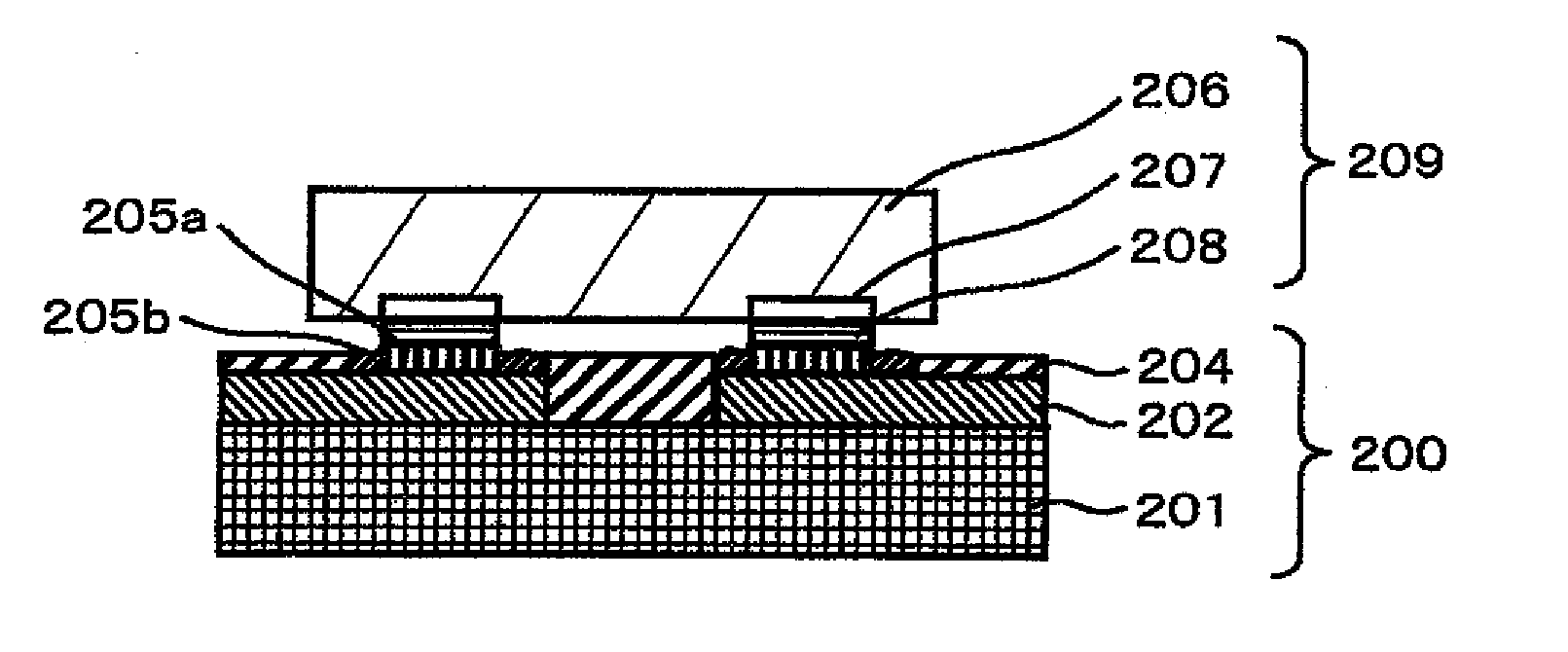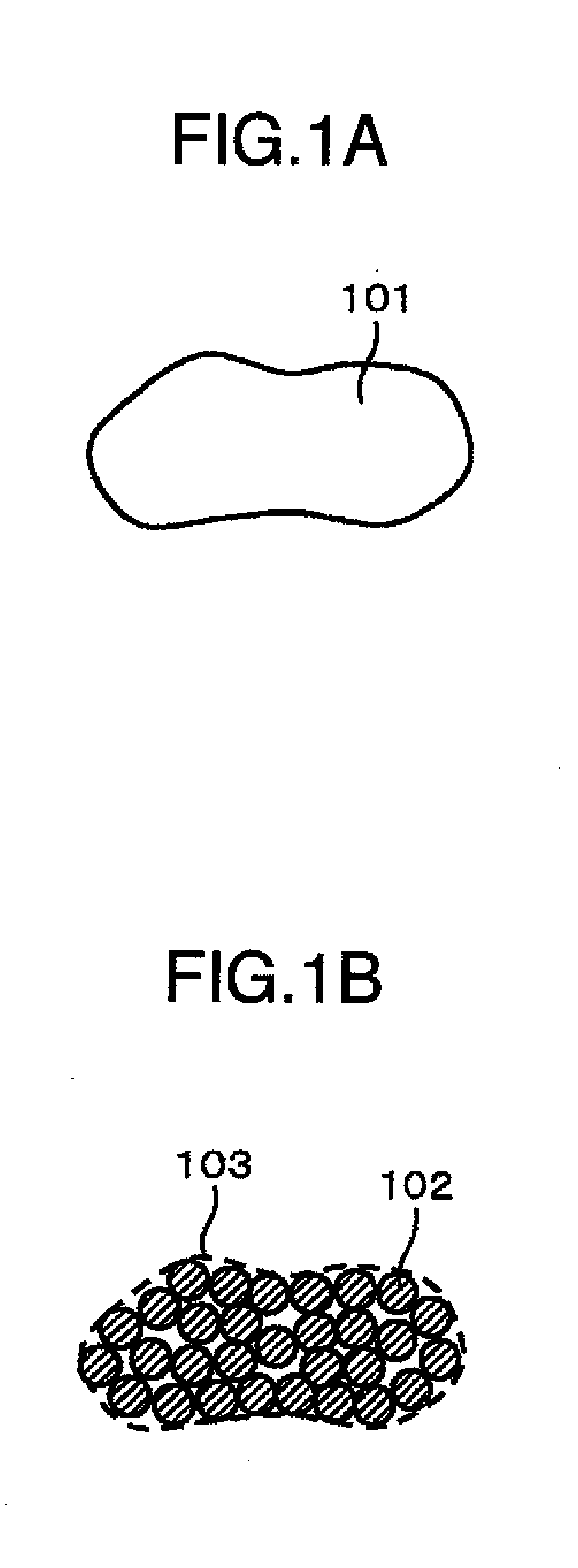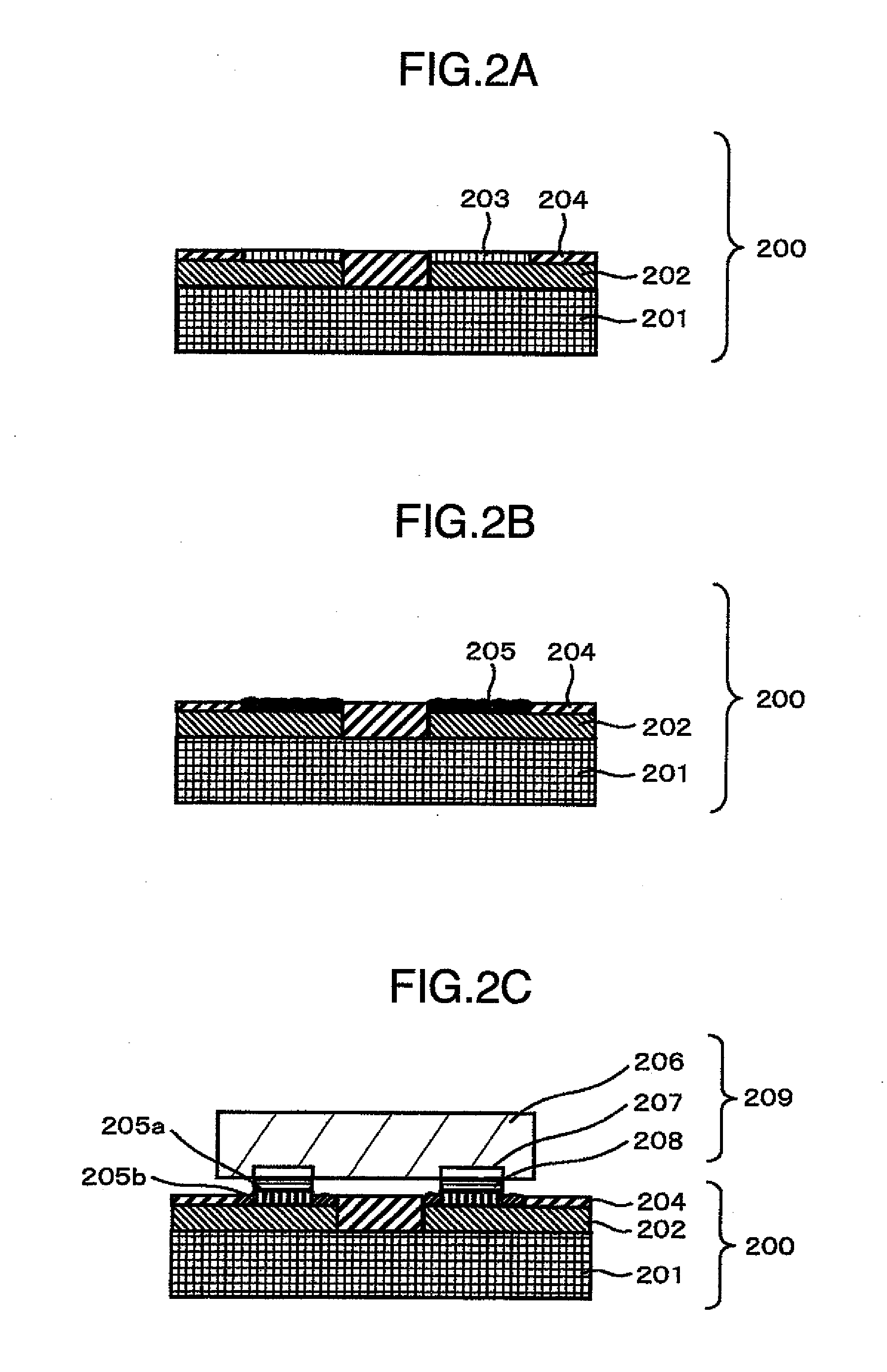Electronic member, electronic part and manufacturing method therefor
a technology of electronic parts and electronic components, applied in the field of electronic components, can solve the problems of increasing the amount of organic substances to be added to the composition substance, voids are likely to remain, and bonding failures, and achieves high heat-resistance silver oxide, high heat-liberation, and reduced pitch spacing
- Summary
- Abstract
- Description
- Claims
- Application Information
AI Technical Summary
Benefits of technology
Problems solved by technology
Method used
Image
Examples
embodiment 1
[0098]In the first embodiment, an Ag-metalized layer is formed onto a CU wiring on the circuit board, using the electrolytic plating method. The thickness of the Ag-metalized layer is equal to 5 μm.
[0099]Next, the Ag-metalized layer is oxidized into a silver-oxide layer, using the anode oxidization method. In the anode oxidization, a sodium-hydroxide (NaOH) aqueous solution is used, then maintaining the current density (mA / cm2) at a constant value. A Ni electrode is used as an opposed electrode.
[0100]Changing the mole concentration of the sodium-hydroxide aqueous solution and the current value changes the pH and the current density, respectively. Then, the relationship among the pH, the current density, and the thickness of the silver-oxide layer is checked and clarified. The thickness of the silver-oxide layer is determined by cutting out its sample cross-section, observing the cross-section using a scanning electron microscope, and averaging 50 points in an arbitrary field-of-view...
embodiment 2
[0102]A 5-μm-thick Ag-metalized layer is formed onto the CU wiring on the circuit board, using the electrolytic plating method. Then, the Ag-metalized layer is oxidized into a silver-oxide layer, using the ozone oxidization method. At this time, a 150-° C. and 5-vol %-ozone-concentration gas is sprayed over the Ag-metalized layer. It has been confirmed that this spray produces the silver-oxide layer, and that the thickness of the silver-oxide layer increases in accompaniment with an increase in the time during which the gas is sprayed.
embodiment 3
[0103]In the third embodiment, the cross-sections of the silver-oxide layers manufactured in the first and second embodiments are observed using the scanning electron microscope. As a result of the execution of the one-hundred-thousands-times-magnification observation, a-few-nm to a-few-tens-nm several voids are merely observed in a dispersed manner. Accordingly, it has been found out that the silver-oxide layers with almost no void are formed. It is conceivable that this result is attributed to the fact that, when the Ag-metalized layers are oxidized into the silver-oxide layers, its reaction becomes a one where an increase in the volume occurs.
[0104]As the comparison with the above-described cases, a pressured-powder material is manufactured by imparting a 100-MPa pressure application to 1-μm to 3-μm-particle-diameter silver-oxide particles. A resin is embedded into the pressured-powder material manufactured, and its cross-section is cut out, then observing the cross-section using...
PUM
| Property | Measurement | Unit |
|---|---|---|
| thickness | aaaaa | aaaaa |
| curvature radius | aaaaa | aaaaa |
| melting point | aaaaa | aaaaa |
Abstract
Description
Claims
Application Information
 Login to View More
Login to View More - R&D
- Intellectual Property
- Life Sciences
- Materials
- Tech Scout
- Unparalleled Data Quality
- Higher Quality Content
- 60% Fewer Hallucinations
Browse by: Latest US Patents, China's latest patents, Technical Efficacy Thesaurus, Application Domain, Technology Topic, Popular Technical Reports.
© 2025 PatSnap. All rights reserved.Legal|Privacy policy|Modern Slavery Act Transparency Statement|Sitemap|About US| Contact US: help@patsnap.com



